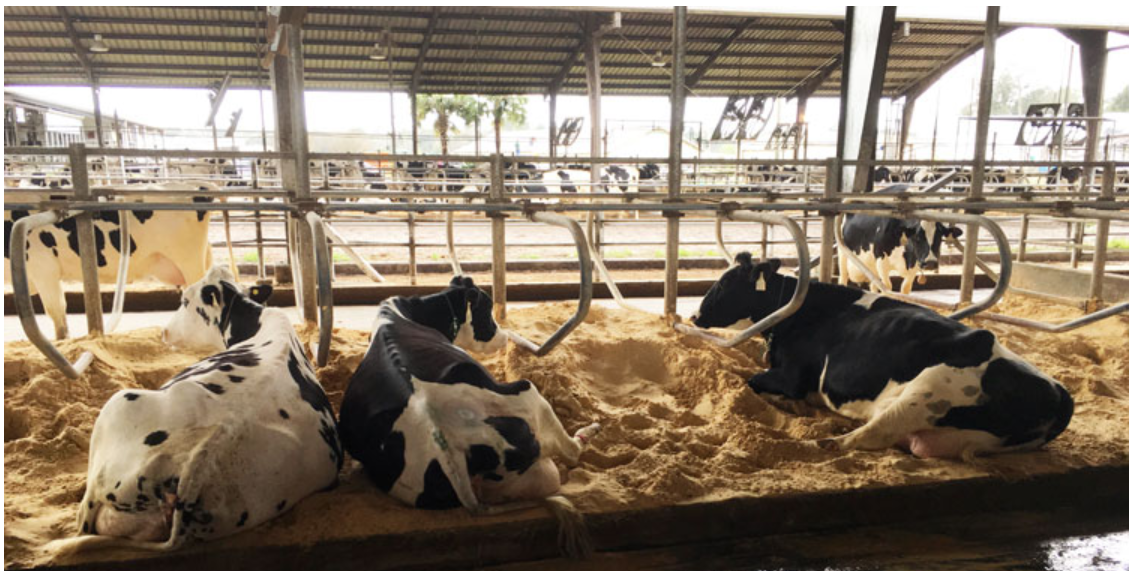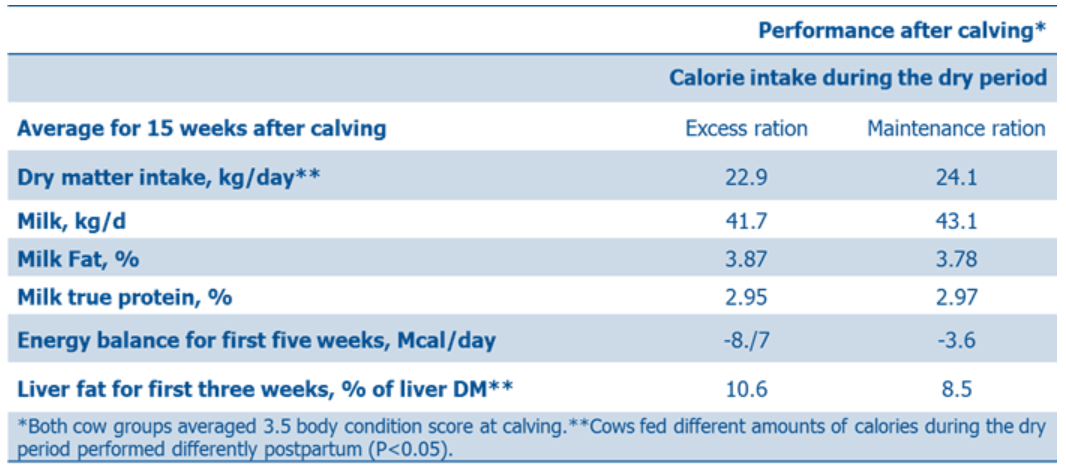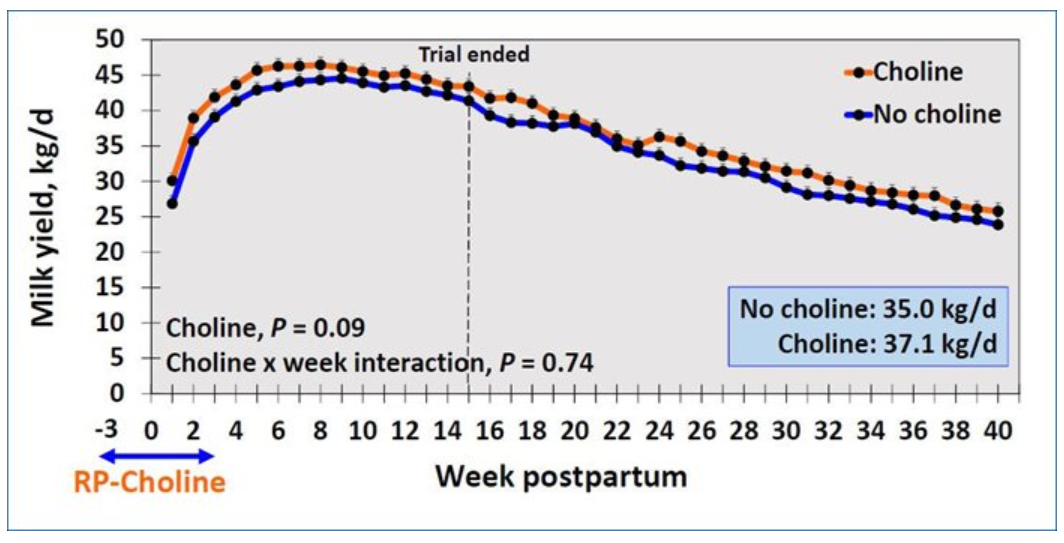



Giving fresh cows that extra boost
What goes into the cow before it calves, impacts both health and production in subsequent lactation. Marcos Zenobi, Jose Santos and Charlie Staples from the University of Florida explain.All dairy cows mobilize stored fat for at least three weeks after calving to help support milk production. Metabolic problems such as ketosis and fatty liver are common during this time if cows struggle to use the mobilized fat efficiently, and that can take a toll on farm profits. Various strategies during the dry period have been proposed to help minimize inefficient fat utilization around calving. Controlling body condition at calving to a range of 3 to 3.5 is one such strategy because fat cows perform poorly. However, cows may store fat in their viscera (kidney and intestines), which is invisible to those who are body scoring cows.
Just as belly fat in people has been linked to diabetes and heart disease, cows that accumulate belly fat during the dry period may be more prone to metabolic problems after calving. For many years, pregnant dry cows have been fed diets above their energy requirements, especially during the close-up period, in order to prepare the ruminal microbes for high-energy diets after calving and to compensate for reduced feed intake during the last one to two weeks of gestation. These diets are often heavy in corn silage or grain.
In some instances, dry cows are ignored and do not receive enough nutrients resulting in under-condition at calving and lack the energy reserves to support milk in the early weeks. Alternatively, feeding diets that include less corn silage and more low-energy forages, such as wheat straw, may be “just right.” These “just right” diets (Goldilocks diets) allow cows to eat as much as they want without gaining much weight.
Exploring the Goldilocks diet
At the University of Florida, 93 multiparous Holstein cows were divided into two groups and fed one of two total mixed rations (TMRs) from dry-off to calving, spanning approximately seven weeks. One diet was 58% corn silage and 8% wheat straw (excessive intake of calories) whereas the second diet was 37.5% wheat straw, 23% corn silage, and 6% triticale silage (evenly balanced, the Goldilocks diet). Brewers grains, citrus pulp, canola meal, and minerals/ vitamins were the other feed ingredients in both diets.
At two weeks before calving, cows offered the high corn silage diet ate more TMR dry matter (12.4kg vs 11.2kg) and more energy (140% vs 109% of their energy requirement) compared to the high wheat straw “Goldilocks” group. Interestingly, during the last two weeks of gestation, cows fed the high corn silage diet dropped in feed intake twice as fast compared to the cows receiving the high straw diet. This rapid drop may predispose cows to metabolic problems upon calving.
Body condition score averaged 3.5 at the time of calving and did not differ between the two groups of cows. Cows were fed the same TMR postpartum (45% corn silage, 14% ground corn, 15% soybean meal, 8% soybean hulls, 8% whole cottonseeds, 6% citrus pulp, and 4% minerals/vitamins). Cows were monitored closely for the first 15 weeks after calving.
Cows fed the "Goldilocks" diet prepartum ate on average 1.18kg more of TMR dry matter daily throughout the first 15 weeks following calving (24.1kg vs 22.9kg per day). The "Goldilocks" cows eating more feed also produced 1.4kg per day more milk (43.1kg vs 41.7kg per day), but this advantage was not statistically greater. Thus, cows eating the lower energy diet prepartum relied less on body energy reserves postpartum to sustain milk production.
During the first weeks postpartum, these cows were in less negative energy balance, had 10% less fat in their blood, exhibited fewer cases of ketosis, and had 20% less fat in their liver as determined from liver biopsies.
Overall, multiparous Holstein cows can be fed a single diet throughout the dry period that is matched to their nutrient requirements for pregnancy and maintenance that will result in a healthier and potentially more productive performance after calving.
More milk possible
Another feeding strategy for pregnant dry cows is to add ruminally-protected choline (RPC) to the diet. Choline is a water-soluble vitamin found in feeds, but ruminal microbes destroy it during fermentation so that very little choline from the diet is available for absorption from the small intestine. The cow can synthesize some choline in its tissues, but apparently not enough to optimise milk production.
At the University of Florida, we fed O or 60 grams per day of an RPC product from 21 days before expected calving through 21 days after calving to 93 multiparous Holstein cows. Dietary methionine was maintained at 2.3% of metabolisable protein and the lysine to methionine ratio was 3: 1.
Cows fed RPC tended to produce more milk (43.4kg vs 41.3kg per day) without consuming more feed (23.8kg vs 23.2kg per day) over the first 15 weeks of lactation. We continued to follow each cow's milk production after they went back into the general herd. Again, milk production tended to be greater over the first 40 weeks of lactation (37.1kg vs 34.9kg per day).
Cows consuming RPC were in a more negative energy balance at two and three weeks after calving but without greater mean concentrations of plasma fatty acids or ketones (beta-hydroxybutyric acid) in the first five weeks. Liver fat (triacylglycerol) was also not higher in the RPC group during the first three weeks. Choline has reduced fatty liver in many species, including dairy cows. In this experiment, it may have helped to prevent an increase in fatty liver in the midst of a temporary, more negative energy state.
Choline helped health, too
For the first time, several additional benefits of feeding RPC were documented in our study. The prevalence of subclinical hypocalcemia (less than 8 milligrams of Ca/100 mL of plasma) was reduced from 25% to 10% during the first seven days postpartum when feeding RPC.
The immune status of the multiparous cows fed RPC appeared to be improved based upon 1) dropping rather than climbing rectal temperatures the first 12 days postpartum, 2) a greater proportion of the blood neutrophils killing bacteria at 17 days fresh, and 3) greater concentration and total production of immunoglobulins (lgG) in colostrum.
Using timed A.I. methods, pregnancy tended to be better (41.3% vs 23.6%; P<0.10) at first insemination (10 weeks postpartum) but did not differ by 40 weeks postpartum (69.8% 62.5%). From weaning to 12 months of life, heifers born from dams fed RPC had significantly better average daily gains (0.9kg vs 0.8kg pounds per day). Supplementing RPC for six weeks during transition, costing about £18 per cow, had long-term benefits for multiparous Holstein cows and replacement heifers.
The authors are a graduate student and professors at the University of Florida, Gainesville.
TheCattleSite News Desk






